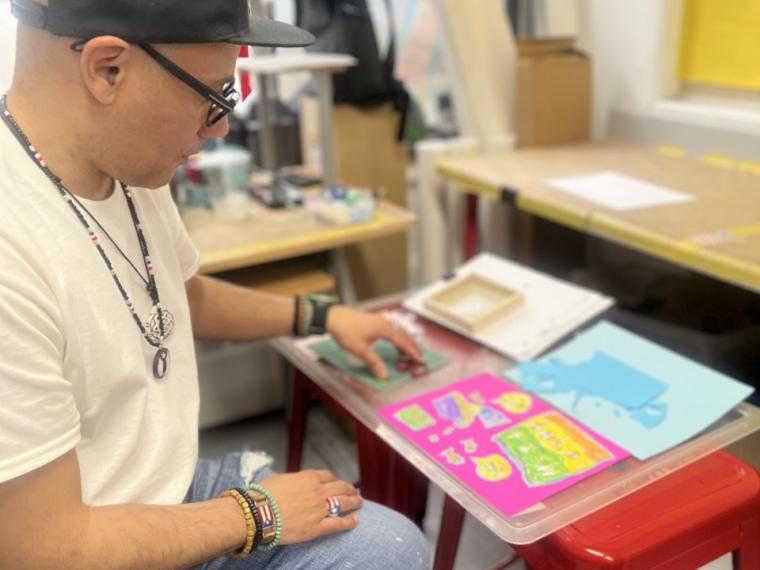Story

Visual Storytelling: an Interview with Milbank Teaching Artist Justin Rodriguez

This week we were privileged to get some time to talk with Pop artist Justin Rodriguez about teaching his inspiring visual arts storytelling skills to the young artists of Milbank. Please enjoy the highlights of our amazing conversation about working with Milbank’s student artists and the upcoming student art show in June at Milbank.
So, you have an art show coming up in June. Tell us more about what you’re working on with the kids to prepare.
So, I try to give them simple ideas to start with. You know, it could be like summer things. It could be video games. It could be about their favorite movies, their favorite cartoon shows, anything that inspires them or motivates them. Any idea that gets them going and that they can combine into their art.
The pictures look amazing, almost like composites. Tell me more about the process. How do the kids know where to begin?
When they first show me their sketches, you know, I review what they’re working on because sometimes they draw things, you know, even I don't understand! Sometimes they are very abstract. But, I tell them, just draw me another character, draw me something else. You’ve got to give us something to work with. Keep imagining and drawing. We need more to build your scene, your unique story. Often we listen to music. It helps the art flow. I don’t know how to explain it, but many artists use music to unlock what they’re working on. The way the music is making them feel. You know, interpret that into your artwork. That's what I personally do and I want them to tap into that feeling - a lyric, an emotion, the flow.
So the kids paint many pictures and then you help them to create a scene. How do you assemble their work to create a visual story?
Some days they’ll come to me smiling, “How about this?”, you know, I’m like, “okay, that's really good”, while other times, as we’re working, they tell me that they just don't like it. They don’t like what they’ve done. But I always say, “But you don't see what I see. Let me take it.” I consider how their drawings work together in a composition and what they are trying to say. I’ll tell them, “Keep going. Just draw more!”. I’ll help them come up with more ideas to fill out their theme, whatever it may be. From there, I start assembling a composition incorporating all the different pieces they’ve made. When I show them what I'm doing, how I see the larger concept, that's when they really begin to get it.
This sounds exciting, almost like a discovery. How do the kids react when they see the final product?
So after we assemble their sketches into a collage, something that tells a story, the students begin to really see it and feel inspired. Their eyes pop out of their heads when they see the scenes that they helped to create. They really can’t believe it. I can see that they want to tell a story and so I really try and help bring it out of them. Given a little taste of it they start really getting it and want to see what else… “what else can I do?” They’re uplifted. Inspired.
What are you hoping to teach the kids by exhibiting and selling their artwork?
I tell the kids, okay, be prepared for people to ask lots of questions like what colors they used and how they came up with their ideas. I tell them that it's important to stay grounded, you know, and not to lose yourself or over-hype yourself. Because it’s not about the money it’s about mastering their craft and staying humble and not forgetting where they came from. I want them to know that money comes later after they reach a mastery level. For now, just focus on drawing and improving every time you come to class. You know, there are a lot of people here who are just enjoying looking at your artwork and that you really put smiles on people's faces. And that’s something they’ll never forget.
Thank you Justin for the inspirational conversation about art, storytelling, and what is shaping up to be an unforgettable art show in June. See you there!
